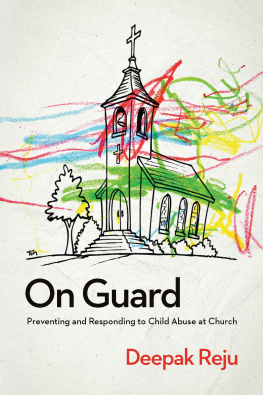Chapter 4
Types, Techniques, and Targets of Sexual Predators
In November of 2011, all of the major news networks broke stories about former Penn State defensive coordinator Jerry Sandusky, who was accused of sexually abusing at least eight boys over a span of fifteen years. Rather quickly, a dark cloud grew over Penn State. Two administrators left over accusations of a cover-up; the board of trustees fired the president of the school, Graham Spanier, as well as legendary football coach Joe Paterno, who was Sanduskys boss.
In 1977, Sandusky started a foster home for troubled boys, which later turned into a statewide charity. Over the course of several years, Sandusky had enough suspicious and potentially inappropriate encounters with young boys to warrant investigation. A lengthy grand jury investigation in 2010 and 2011 led to the arrestand a black mark on one of college footballs most revered programs. In June of 2012, Sandusky was found guilty and given a thirty-year prison sentence.
Sanduskys life lines up with one of the typical profiles of a sexual predator. Hes not disheveled and disliked. He is someone who is respected and highly revered in his community. Hes not someone who is poor and socially isolated. He is someone who has influence and money. He is not someone who abducted a child and forced him to do lewd things. He is someone who regularly spent time with troubled children and lavished gifts and special treatment on them. He is not someone suspected of being abusive to young children. He is someone who was thought to be doing great good for kids through his charity work and adoption of six children.
Are you surprised? Most folks would not have pegged Sandusky as a potential child abuser. But then again most of us make false assumptions about who sexual offenders are and who they are not. How do sexual predators operate? Who do they target? How do they get away with what they do? Those are some of the questions we want to cover in this chapter as we think about the types, techniques, and targets of sexual predators.
The Types of Sexual Predators
There are two types of sexual predatorsthe power predator and the persuasion predator. Both wreak great havoc in the lives of their victims. Both are problematic for police, parents, and the societies in which they live, and they have very different ways of accomplishing their evil ends.
The power predator takes a child by sheer force. He overtakes his victim by overpowering her and forcing her into captivity. You can think in terms of a child grabbed in a park or a schoolyard, dragged into a car, and driven off without the strength or ability to stop the sexual offender.
Bestselling author and risk-assessment expert Gavin de Beker describes it this way: The power predator charges like a bear, unmistakably committing to his attack. Because of this, he cannot easily retreat and say there was merely a misunderstanding. Accordingly, he strikes only when he feels certain hell prevail.
Almost twenty years ago, Jaycee Dugard was a young girl on her way to the school bus when Philip Craig and his wife Nancy Garrido abducted her. Nancy had scouted out Jaycees path to school, and then one morning, just as Jaycee started walking down the road, the couple drove alongside her. Philip pulled out a stun gun, shocked the girl, and then Nancy pulled her into the back of the car. Philip would later say to his wife, I cant believe we got away with this. Unlike Jaycee, many victims of a power predator are never heard from again.
The persuasion predator uses his personality, charm, and influence to convince others that he is trustworthy and then at the right time strikes to abuse children. You might think about the illustration of a wolf in sheeps clothing: The wolf intends to harm others but doesnt want them to discover his plans and so puts on the appearance of an innocent sheep.
In church settings we are often less focused on power predators. If you have a good structural setup in your childrens ministry wing (check-in desk, half-doors on classrooms, hall monitors, etc.) and some type of security check-in system, that does a lot to keep the power predator at bay. The persuasion predator is far more likely to infiltrate your church setting.
The Myth of Stranger Danger
One of the most common myths about sexual offenders is that they will be strangers who take away your child. Power predators do exist. They scope out playgrounds or other places with kids to abduct children and steal their lives. Jaycee Dugard knows this reality all too well.
But in church and family settings, our problem is much less often with a stranger than it is with those whose lives regularly intersect with ours: fellow church attenders, childcare workers in the nursery, family members, and neighborsthe people we know, not the people we dont know. Boz Tchividjian, executive director of Godly Response to Abuse in the Christian Environment (G.R.A.C.E.), makes this point: It is common knowledge that most children are not sexually victimized by strangers. In fact, one study found that only 10 percent of child molesters molest children that they dont know.
Many children are taught from an early age not to talk to strangers. But strangers are not as much of a problem as some who live among us every day. Teaching our children to be wary of strangers can give us a false sense of security. What parents often ignore is the familiar adult who is too friendly with our kids. Consider the following:
- More than eighty percent of the time, victims of child abuse know their abusers.
- Most abuse takes place within the context of an ongoing relationship.
- Some child abusers are married and abuse their own children.
Most children know how to respond to an unwelcome stranger, but theyre uncertain what to do when a safe adult makes them uncomfortable. Consequently, we will spend much of our time considering how to protect against the safe adult who is a persuasion predator.
What Is the Typical Profile for a Sexual Predator?
Pretend youre taking a multiple choice test. Take a look at the list below and make your best guess at who you think might fit the profile for a sexual offender.
A. A young, single male architect
B. A soccer mom with four children
C. A pediatrician
D. A Catholic priest
E. A public school teacher
F. None of the above
G. A and D only
H. All of the above
The correct answer is H. While single males are the most likely, we cant assume this to be the only type of predator. There are some instances when women get trapped in this perverse sin. Most commonly, one would think of a school teacher who is leading teenage boys astray with inappropriate sexual encounters. But there are other categories of female offenders, including some with sadistic tendencies, and those who are coerced by a male partner to abuse children.
In fact, predators come in all typessingle and married; blue and white collar; educated and uneducated; rich, middle class, and poor. In examining a range of sexual offender cases, Ive found examples in almost every category of workcollege professor, athletic director of a private school, Catholic priest, doctor, lawyer, pastor, and many other professionals. We cant limit sexual offenders to just one generic profile.
The Techniques of a Sexual Predator
Questions abound when it comes to understanding sexual offenders. How do predators get away with the things that they do? How do they fool the church community and then the child? What methods do they employ to keep children from disclosing their grotesque behavior?






